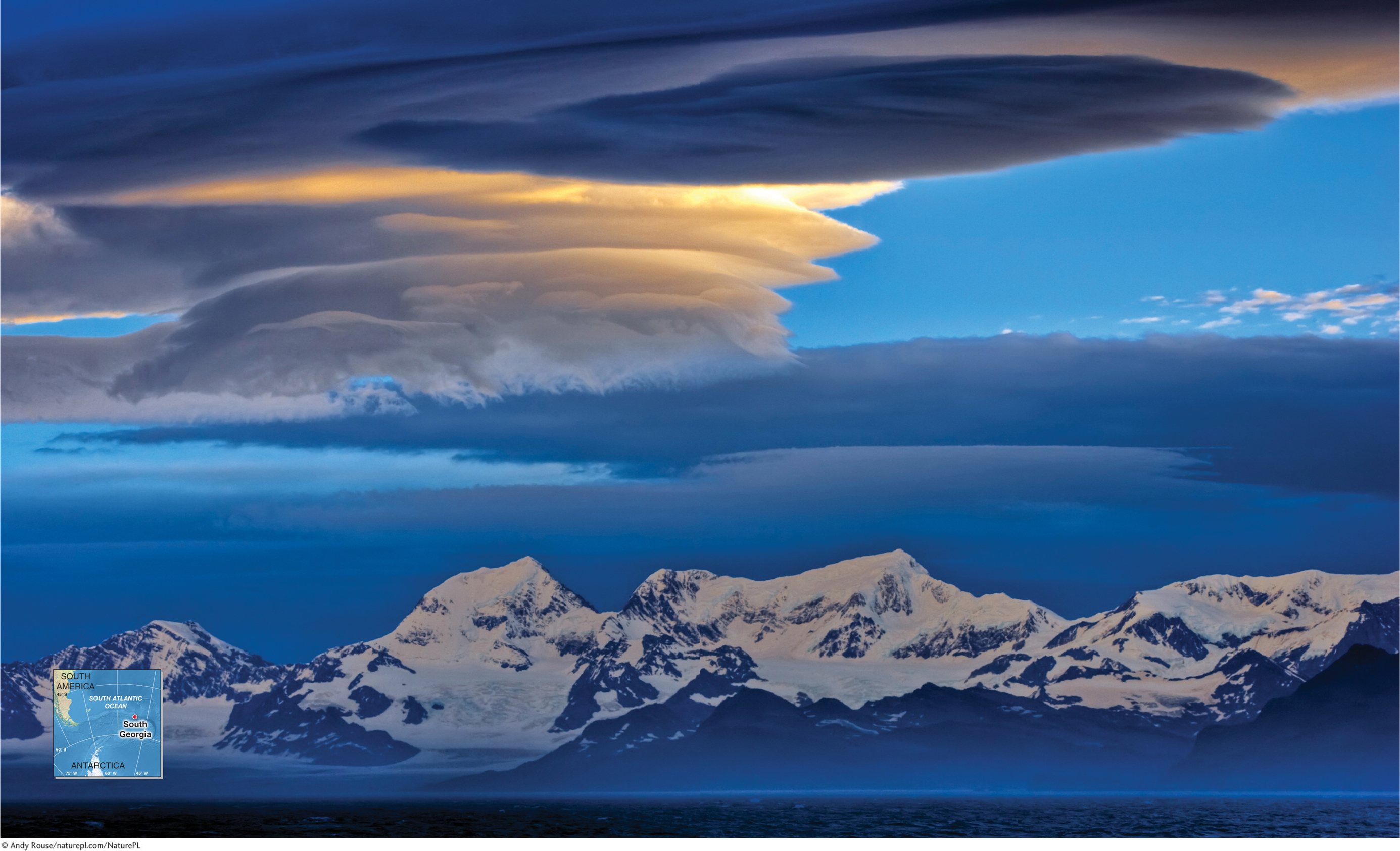Portrait of the Atmosphere
1

LIVING PHYSICAL GEOGRAPHY
What are clouds made of?
How high does the atmosphere go?
What are northern lights?
Why are skin cancer rates increasing worldwide?
THE BIG PICTURE
The atmosphere is composed of gases and has a layered structure. It shields us from the Sun’s harmful rays, but human activity has changed the atmosphere’s protective shield.
LEARNING GOALS
After reading this chapter, you will be able to:
1.1
Describe the gases and other materials that make up the atmosphere.
1.2
Explain what causes air pressure and how air pressure changes vertically within the atmosphere.
1.3
Name and describe the atmosphere’s layers.
1.4
Identify major atmospheric pollutant types and discuss their effects on human health.
1.5
Assess the effects of anthropogenic pollutants in the ozonosphere and the anticipated condition of the ozonosphere in the coming decades.
THE HUMAN SPHERE:
Wyoming’s Air Pollution Problem
FOR MANY, WYOMING BRINGS to mind clean skies as far as the eye can see. But lately, western Wyoming’s ground-
The United States is currently experiencing a boom in drilling for natural gas. Wyoming and many other states have both prospered from and suffered the consequences of a rush to extract natural gas from the ground (Figure 1.1).

Extracting natural gas from the ground is energy intensive and requires diesel-
This chapter explores the composition of the atmosphere, air pressure in the atmosphere, the layered structure of the atmosphere, and air pollution. The protective role of the atmosphere is also examined in light of the effects of CFCs (chlorofluorocarbons), gases released into the atmosphere by human activities.